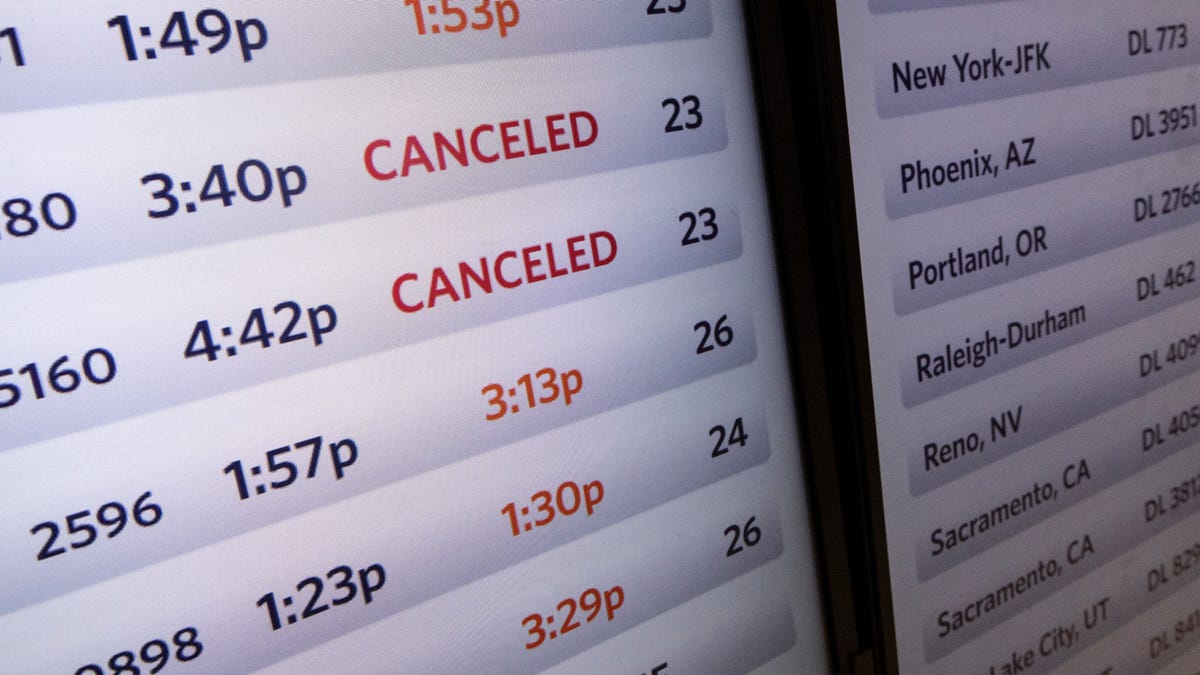Why Are Your Flights Canceled If Planes Can Handle Bad Weather? | Cruising Altitude
During a flight when I’m experiencing turbulence, I sometimes remind myself: “This is uncomfortable, but I’m safe.”
Aircraft are constructed to endure challenging weather, so one might wonder: Why do we encounter weather-related delays?
There’s a lot happening behind the scenes when weather causes disruptions.
“Airplanes are highly capable,” Ken Byrnes, assistant dean and head of flight training at Embry-Riddle Aeronautical University, mentioned to me. “The design of these aircraft allows them to bear significant loads.”
While airplanes can structurally manage weather conditions well beyond what is typically encountered, this is only one element in deciding whether to proceed with a flight.
Every traveler understands that weather often poses the biggest challenge to a seamless travel experience. Here’s why.
Planes Are Built to Withstand Bad Weather
The next time you fly and encounter turbulence, take a moment to look at the wing through the window. You’ll see it bending. That’s intentional. The flexing actually helps the plane maintain stability in turbulent air and indicates that the wing is safely absorbing and dispersing the forces it faces.
According to Byrnes, planes are engineered to endure immense forces while in flight. All aspects of an airplane’s structure undergo rigorous testing to ensure they remain intact even in extreme conditions.
“A lot goes into minimizing risk via design capabilities,” he explained.
During tests, airplane wings are bent far beyond their normal flight limits.
Additionally, airplane engines are engineered to resist natural hazards, such as hail, heavy rain, and bird strikes, within certain parameters.
Why Bad Weather Can Still Be Dangerous
However, ensuring safe flights involves more than just the physical endurance of airplanes.
“While they can withstand loads, the aerodynamic pressures in stormy conditions can complicate flying,” Byrnes noted. “You want to avoid windshear, which involves sudden changes in wind or direction.” Rapidly shifting wind conditions can alter an aircraft’s aerodynamic profile and may lead to a loss of lift.
“Turbulent conditions are what we strive to avoid. They can cause aircraft to stall,” Byrnes remarked. “It’s more forgiving at high altitudes, but at lower altitudes, there’s little room for recovery.”
This is why adverse weather poses a particular challenge for airport operations.
While changing the flight route may help avoid unfavorable weather, aircraft approaching or departing from an airport have limited options to navigate around storms.
“In such situations, it’s crucial to ensure the plane has sufficient lift to remain airborne,” Byrnes stated. “The closer you get to the ground, the less altitude you have to recover.”
Prioritizing Safety
As is the case in aviation, the choice to delay or cancel flights due to weather ultimately boils down to safety.
“Airlines aim to provide excellent customer service while prioritizing safety,” Byrnes commented. “They won’t take unnecessary risks just to meet demand, as it’s not worth it.”
Moreover, a plane’s operational capabilities are not the sole factor in assessing safety. We’ve repeatedly seen that passengers can often disregard seatbelt regulations. While an aircraft may be built to endure severe turbulence, the human body requires restraints to withstand it safely, which can pose risks to those inside the cabin, even when the aircraft itself is engineered to handle such situations.
Laura Einsetler, a captain for a major U.S. airline and author of the blog Captain Laura, shared that flight crews never aim to intentionally fly through bad weather, but sometimes navigating through milder turbulence is unavoidable.
When that happens, she mentioned, she does her utmost to prepare passengers for the experience, but the responsibility also falls on individuals to ensure their own safety.
“Sadly, we often announce safety measures and find that few people pay attention,” she said. “Passengers should be attentive to what flight attendants are communicating to ensure everyone’s safety.”
The Ripple Effect of Weather on Flights
Bad weather can lead to a chain reaction of delays. One delayed flight can throw the airline’s schedule out of sync and create complications for air traffic control as they adjust flight plans.
If any issues arise with When planning your trips, keep in mind these two tips from Byrnes:
- Firstly, prioritize your safety. Airlines are committed to ensuring your well-being. While you may be eager to depart, airlines aim to transport you to your destination securely and with ease. You would likely be displeased enough to post a negative comment on social media if your flight turned into a turbulent journey through bad weather.
- Secondly, maintain patience and kindness toward airline staff. Although delays can be irritating, everyone is sharing the same experience together.

